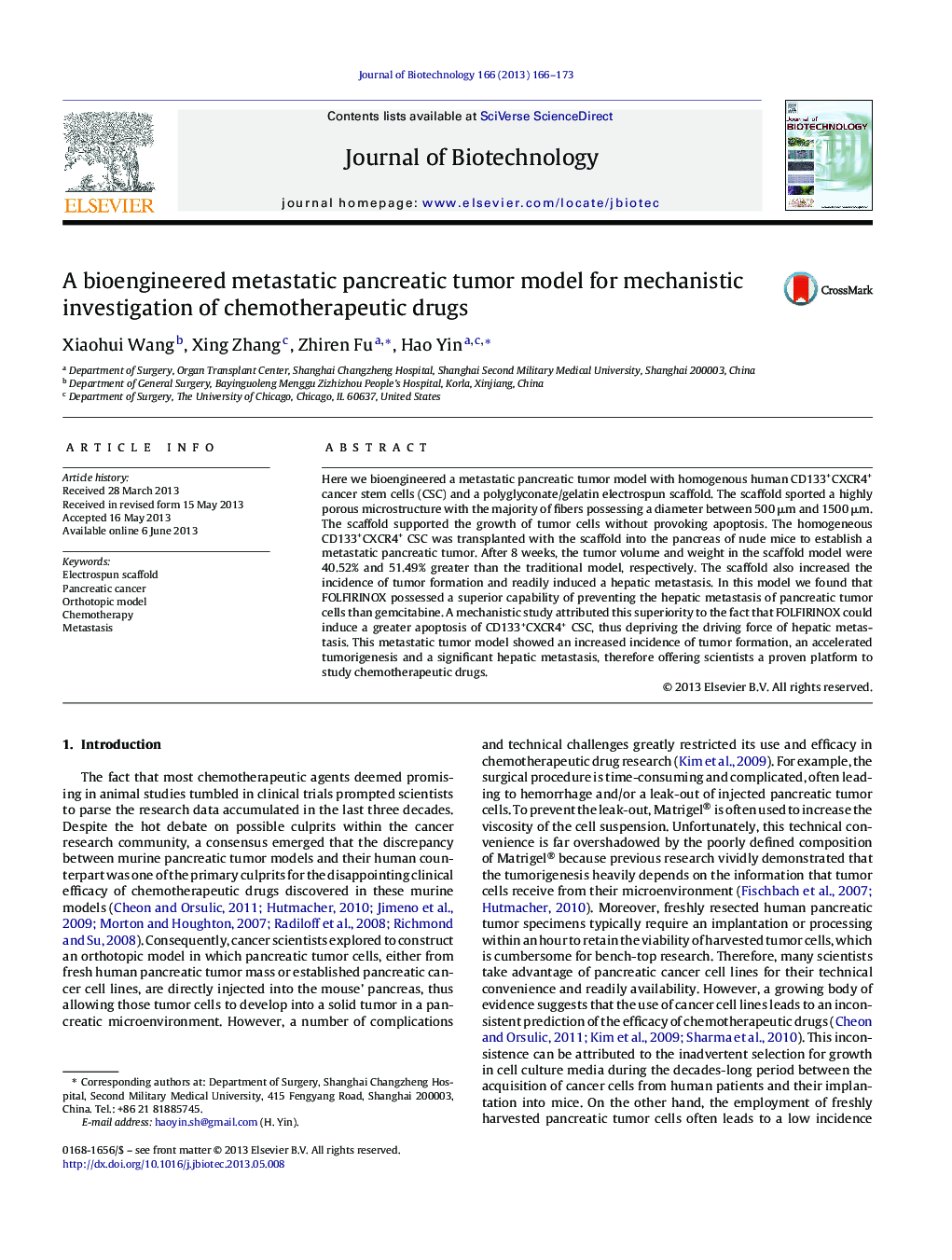| Article ID | Journal | Published Year | Pages | File Type |
|---|---|---|---|---|
| 23495 | Journal of Biotechnology | 2013 | 8 Pages |
•We bioengineered a metastatic pancreatic tumor model with an electrospun scaffold.•The model featured an accelerated tumorigenesis and hepatic metastasis.•The model can be used to comparatively study chemotherapeutic drugs.•The model showed depleting CD133+CXCR4+ cells could prevent metastasis.•FOLFIRINOX is a preferred drug than gemcitabine in depleting CD133+CXCR4+ cells.
Here we bioengineered a metastatic pancreatic tumor model with homogenous human CD133+CXCR4+ cancer stem cells (CSC) and a polyglyconate/gelatin electrospun scaffold. The scaffold sported a highly porous microstructure with the majority of fibers possessing a diameter between 500 μm and 1500 μm. The scaffold supported the growth of tumor cells without provoking apoptosis. The homogeneous CD133+CXCR4+ CSC was transplanted with the scaffold into the pancreas of nude mice to establish a metastatic pancreatic tumor. After 8 weeks, the tumor volume and weight in the scaffold model were 40.52% and 51.49% greater than the traditional model, respectively. The scaffold also increased the incidence of tumor formation and readily induced a hepatic metastasis. In this model we found that FOLFIRINOX possessed a superior capability of preventing the hepatic metastasis of pancreatic tumor cells than gemcitabine. A mechanistic study attributed this superiority to the fact that FOLFIRINOX could induce a greater apoptosis of CD133+CXCR4+ CSC, thus depriving the driving force of hepatic metastasis. This metastatic tumor model showed an increased incidence of tumor formation, an accelerated tumorigenesis and a significant hepatic metastasis, therefore offering scientists a proven platform to study chemotherapeutic drugs.
